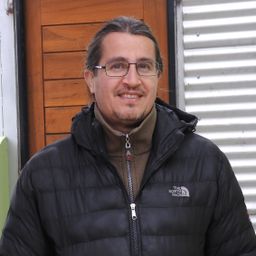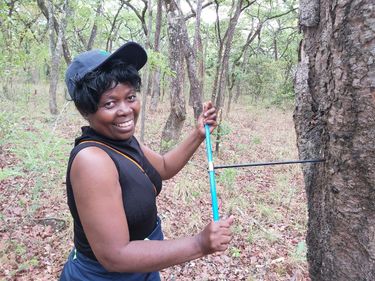
Sessions in which Mariano Morales participates
Thursday 30 June, 2022
Dendrochronological archives in the tropics of the Americas have been under-studied for a long time. Some of the challenges include the Identification of tree-ring boundaries in certain tree species, absence of winter dormancy associated to low temperatures in most of the cases, and logistic difficulties of fieldwork in remote sites. However, part of the slow progress is also related to the fact that historically much less resources have been inv...
Given the short span of instrumental hydroclimatic records in the South American Altiplano, longer time records are needed to understand the nature of climate variability and to improve the predictability of precipitation, a key factor modulating the socio-economic development in the Altiplano and adjacent arid lowlands. In this region growths P. tarapacana, a long-lived tree species being very sensitive to hydroclimatic changes and widely used for tree-ring studies in central and southern...
Sessions in which Mariano Morales attends
Tuesday 28 June, 2022
Africa is faced with a number of challenges including climate change and ecological disturbance due to various anthropogenic activities. These problems adversely affect the forests and also ecosystem services. My appreciation for the forests motivated me to pursure my undergraduate studies in Forestry. I first applied dendrochronology during my PhD research which focused on understanding the climate change vulnerability of the Zambezi teak forests in Zambia. However, lack of research facil...
Wednesday 29 June, 2022
Information garnered from historical timbers and wooden artifacts (e.g. houses, barns, ships) can greatly enhance our understanding of human, ecological, and climate history, especially in regions where few old-growth forests and trees remain, tree longevity is relatively short (less than 300-400 years), and environmental conditions break down wood rather quickly, like in mesic to wet regions Over the last decade plus, the application of tree-ring techniques on woo...
Fluctuations in water resources is one of the main factors modulating ecosystem dynamics, human population changes and culture in semiarid regions. One of the largest high-altitude semiarid regions of South America is the Altiplano in the Central Andes. With an elevation of 4.000 m this region has been the environment for the settlement of many communities who have inhabited the region for thousands of years. Tree-ring research has been developed in this region allowing the reconstruction ...
Hydroclimate variability in tropical South America is strongly regulated by the South American Summer Monsoon (SASM). However, past precipitation changes are poorly constrained due to limited observations and high-resolution paleoproxies. We found that summer precipitation and the El Niño-Southern Oscillation tarapacana (ENSO) in the Chilean variability and Bolivian are well registered Altiplano in in tree-ring the Central stable Andes oxygen (18–22°S, isotopes ∼4,500 (δ18OTR) m a.s.l.) of...
Presentation of all Ameridendro2022 posters.FREE LUNCH FOR ALL ATTENDEES!
Rescheduled from June 28th to June 29th
Thursday 30 June, 2022
The interpretation of stable isotopes in a dendroecological framework can provide powerful insights into how trees adjust physiologically in response to the environment. This symposium aims to bring together researchers who use stable isotopes in tree rings to address ecophysiological responses to environmental changes from intra-annual to multi-decadal resolution. We hope this symposium will enable fruitful discussions and new ideas a...
